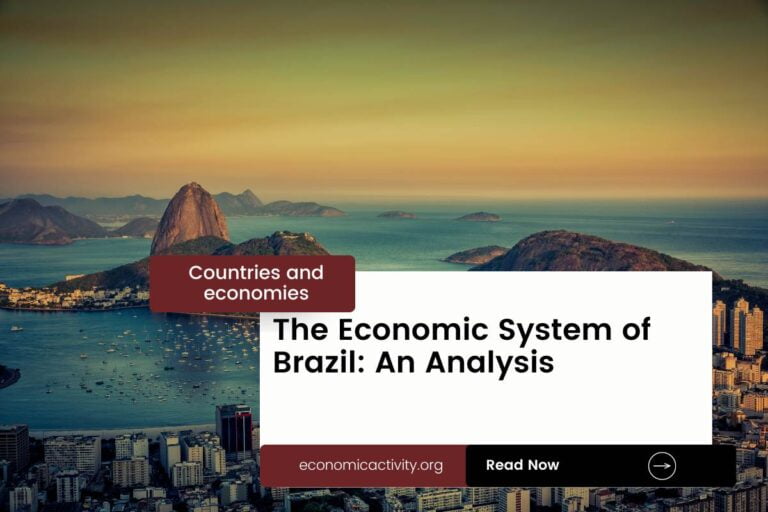Andorra, with a population of 79,824, is ranked 178th in the world, just behind Antigua and Barbuda. Located in Europe, it covers an area of 470 square kilometers, ranking 172nd globally, right below Singapore.
Andorra’s economic position in 2022 showcases a GDP of $3,352,031,094.22, ranking it 162nd globally. It follows Djibouti, with a GDP of $3,515,108,859.95. The GDP per capita for Andorra in 2022 is $41,992.77, placing it 27th worldwide, trailing behind the United Kingdom with a GDP per capita of $46,125.25.
Despite its small size, Andorra’s economy remains stable and prosperous, with a focus on tourism, retail, and finance sectors contributing significantly to its overall economic growth.
What are the economic activities of Andorra?
- Primary activities: 11.9% of GDP.
- Secondary activities: 33.6% of GDP.
- Tertiary activities: 54.5% of GDP.

Primary Sector of Andorra
Andorra’s primary sector, particularly its agricultural activities, thrives due to its favorable climate and abundant natural resources. With 39.91% of the country’s land dedicated to agriculture, Andorra produces small quantities of rye, wheat, barley, oats, vegetables, tobacco, sheep, and cattle.
Despite contributing 11.9% to the GDP, agriculture plays a crucial role in the economy by providing a variety of crops and animal products. The diverse range of agricultural products showcases the sector’s importance, highlighting the self-sufficiency and traditional practices that sustain Andorra’s agricultural sector.
Andorra’s diverse geology provides a rich array of natural resources. The country’s primary sector thrives on hydropower, mineral water, timber, iron ore, and lead. These resources drive the economy through energy production, tourism, and manufacturing, contributing significantly to the country’s economic growth and sustainability.
Secondary Sector of Andorra
What is the secondary sector or what are secondary activities?
The secondary sector involves industries that transform raw materials into finished goods for consumption. In Andorra, the main industrial products are skiing equipment, timber, and furniture. The country’s economy benefits from these industries through domestic sales and exports.
Manufactures play a pivotal role in Andorra’s total exports, accounting for a significant 94.99% in 2023. This underscores their crucial contribution to the country’s economy and global trade relations.
Tertiary sector of Andorra
What is the tertiary sector or what are tertiary activities?
The tertiary sector in Andorra encompasses services that provide intangible goods like advice, expertise, and knowledge to enhance productivity and meet needs. Main activities include restaurants, healthcare, education, banking, communication, media, tourism, transportation, and telecommunications. These sectors play a crucial role in Andorra’s economy by catering to both consumer and business needs.
In particular, Andorra’s economy heavily relies on tourism, with an impressive 8,235,000 annual arrivals, surpassing its population over 103 times. Popular destinations like the Madriu-Perafita-Claror Valley, a UNESCO World Heritage Site, and the Caldea Spa Complex attract numerous visitors, making tourism a vital economic pillar for this small nation.
Another example of tertiary economic activity is the mobile cellular sector, with 114,000 subscriptions, equating to 142 per 100 inhabitants. This connectivity fosters technological growth, enhancing communication and innovation.
International Trade of Andorra
Import Activities of Andorra

Andorra’s import activities are of high importance, with total imports in 2023 amounting to 59% of its GDP.
Andorra’s main import partners are Spain (66%), France (12%), Germany (4%), China (3%), and Italy (3%). The country mainly imports cars, refined petroleum, garments, electricity, and beauty products.
Exports Activities of Andorra

Andorra’s export activities in 2023 totaled $252,365,105.054, representing 7.53% of its GDP. With a low importance level, diversification and growth in exports are crucial for economic resilience.
Andorra primarily exports paintings, integrated circuits, cars, orthopedic appliances, and garments. Its main export partner is Spain, which accounts for 73% of its exports, followed by France at 6%, the UK at 3%, the US and Germany at 2% each.
Andorra economy challenges in 2024
In 2024, Andorra faces challenges despite its high GDP and low unemployment. The country, a non-EU Euro user, struggles to recover from the impact of COVID-19 on its tourism industry. Seeking big tech investments, Andorra aims to strengthen its modern financial sector. As a new member of SEPA and IMF, the country navigates its co-principality status between Spain and France, striving for economic growth amidst global uncertainties.




Leave a Reply